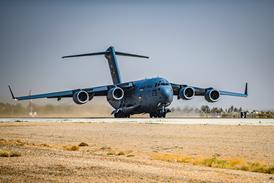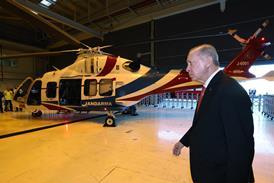Before departing Stockholm Arlanda airport, the crew checked the Q400's technical log but, says the report, the captain did not notice there were three previous reports of starboard propeller system problems, including overspeeding.
The flight to Kalmar was normal until the crew began preparing to intercept the instrument landing system approach for Runway 16. As the aircraft descended through 4,000ft (1,025m) on a heading of 223º to intercept the ILS azimuth of 149º, both power levers were at idle when suddenly the starboard propeller RPM increased from 850 to 1,064. The captain - the pilot flying - said: "We have a prop overspeed." The power on the left engine was increased, but the captain left the overspeeding engine at idle, despite the co-pilot's requests for permission to "secure" it [shut down the engine and feather the propeller].
Intent on levelling out at 2,000ft until ILS intercept, the captain eventually had to demand more than 125% torque from the left engine to prevent the high rate of descent caused by the drag from the starboard propeller, and the consequent massive directional asymmetry. The approach was unstable, with large horizontal and vertical deviations from the ILS approach path, but the captain landed the aircraft.
The accident investigators' verdict reads: "The incident was caused by the fact that the emergency checklist was not completed, and a combination of the pilots not being aware of the risks due to leaving an unfeathered propeller in flight idle, unclear operations documentation concerning the propeller overspeeding type of propeller fault, and deficient follow-up of previous similar occurrences."
Source: Flight International























